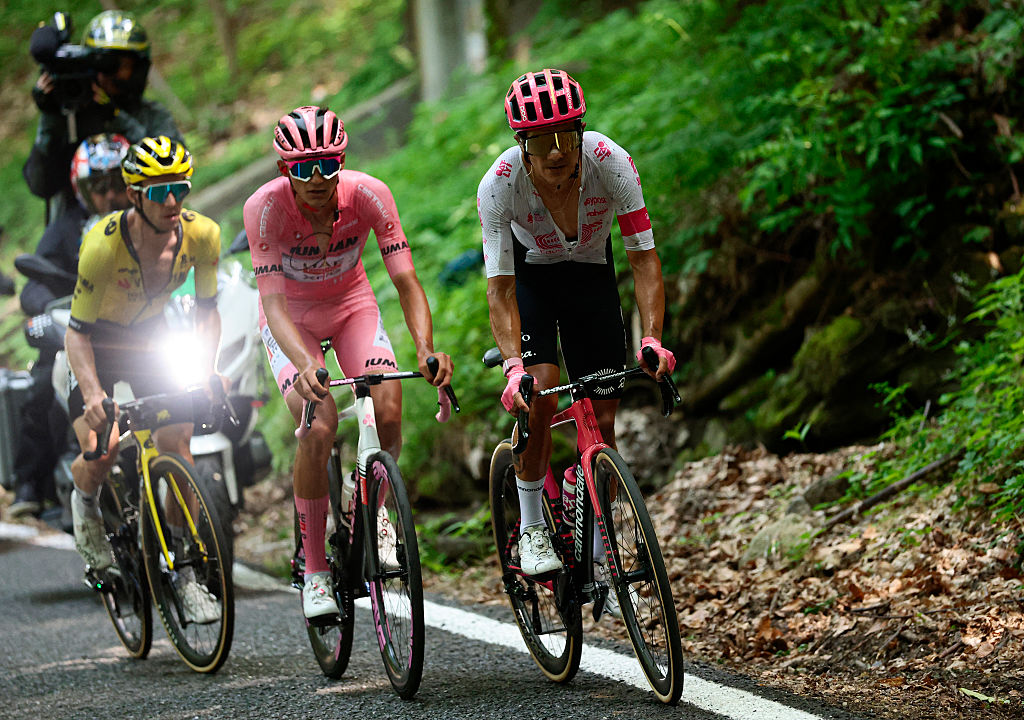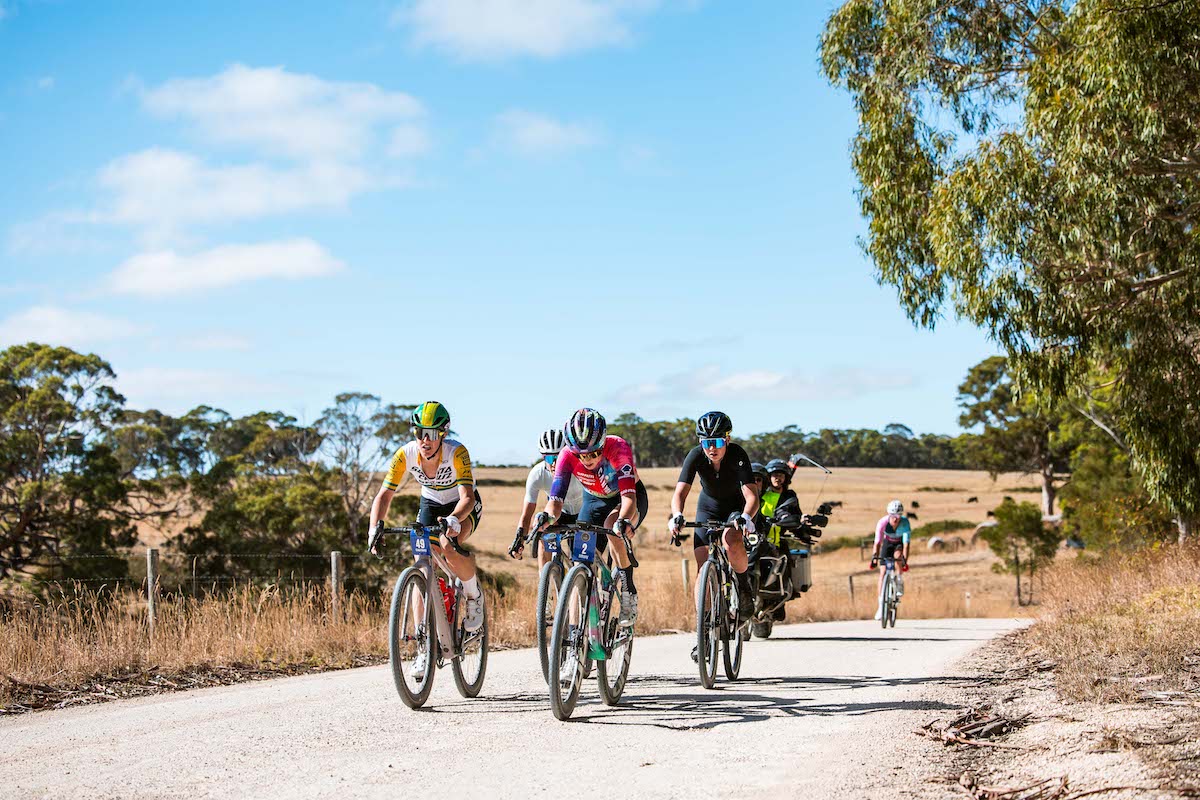Day dreaming: how the 2025 Giro d'Italia was lost and won - Philippa York analysis
What were the keys to Simon Yates' dramatic last-minute turnaround of fortune in the Giro's GC battle?

Picture the scene in the Visma-Lease a Bike team bus on the morning of the 20th stage of this fairytale edition of the Giro d'Italia. The previous day has been disappointing for Simon Yates, accusations were being bandied around about whether the team had followed the plan or not. Isaac del Toro (UAE Team Emirates) and Richard Carapaz (EF Education-EasyPost) had taken 21 seconds on the last climb thanks to their more explosive capabilities and Yates had found himself captured in the group of GC hopefuls.
They were bickering amongst themselves and too tired or scared to chase the top two so it seemed that the man from Bury was going to have to accept the game being played was one for which he didn’t quite have all the requirements. UAE Team Emirates and EF Education-EasyPost were engaged in a tussle that consisted of uphill sprint leadouts and attacks to distance each other. Yates, by his own admission, wasn’t that type of rider. Time to reassess.
In a typical pre-race briefing, someone suggests the ideal scenario, everyone scoffs and the discussion moves on to reality. For the guy racing the overall, it’s just - stay with the GC leaders and hope one of them cracks. Get in the break if there is one for the teammates. Even in the era of big data, it’s not rocket science.
For Yates and Visma, the unlikely ideal scenario of attacking Carapaz and del Toro and relying on neither of them being willing to close the gap is just that. Unlikely but it might happen.
Then perfection would be to hook up with a teammate for the descent and crucially for the valley towards the last climb whilst there is more hesitation behind. As all the team directors know that one, they also plan a helper to thwart any isolation for their side. It’s unlikely, but it might happen.
Therefore the ideal Visma scenario before they even get to Colle delle Finestre is a rider in the break and if that rider is Wout van Aert then even better. That UAE would allow that to occur without covering the possibility with one of their riders is also unlikely. But, and this is where it all started to unravel on the road, they failed to do that very thing the day before. WvA was in the escape and potentially of use if Yates had been let loose.Yates couldn’t do that but the option was there and it was undoubtedly noticed by those in the Visma team car.
Remember the Primož Roglič and Vingegaard against Pogačar on the Col du Galibier? Jumbo (Visma) versus UAE, and the latter made the tactical error of having their man isolated. Surely they wouldn’t make the same tactical errors again. On that occasion by giving out the wrong instructions to Pogačar, he ought to have let Roglič escape and then wait for teammates in the next group, but longer term in how they had already used up the team in the previous stages, which led to the situation being out of control. Letting Wout van Aert be in the stage 19 break with no one from UAE to cover potential GC moves suggested otherwise.
Theories and (best) practice
There are lots of theories on what occurred on the slopes of Colle delle Finestre: redemption for Simon Yates after the Froome attack in 2018; Isaac del Toro should have collaborated with Carapaz; the EF leader ought to have ridden even when he knew he couldn’t drop the Maglia Rosa because second is better than third. It seems to be coming down to attaching blame to individuals' choices at the crucial moments but that’s missing the point.
The latest race content, interviews, features, reviews and expert buying guides, direct to your inbox!
Yes, we could say del Toro should have ridden with Carapaz. Or why didn’t Carapaz just close the gap when he had the chance before the gravel section? He was strong enough, maybe del Toro could have done so too. But he chose not to either.
The tactical errors of the moment were apparent. Carapaz wasn’t prepared to drag del Toro along and do the chasing for him, even though the race leader would have been far from comfortable.

Del Toro had obviously been told in his ear that he was to stay on Carapaz’s wheel no matter what, fearing a surprise attack. That seemed sensible, however, what wasn’t so good were the moments where they both slowed dramatically and gave free time to Simon Yates. In the Visma car, they wouldn’t have believed what they were seeing as all the pieces from the ideal scenario pieces all fell perfectly into place. They were taking advantage of a UAE race leader being isolated again, and even better Wout van Aert was on hand to guide Yates down the descent and blast up the valley to Sestriere. They had planned for the eventuality and even though it was unlikely, it paid off.
Meanwhile, at EF Education their plan hadn’t worked out and toys were being thrown out of the pram. It doesn’t matter who decided not to chase Simon Yates out of Carapaz and the directors in the team car. They are going to get criticism because they appeared to be willing t lose their chances as long as del Toro lost too. Graceful in defeat is a rare thing at this level.
The biggest questions
However, the biggest questions are for UAE Team Emirates and not only for their decisions on the day. The malaise goes deeper and extends further in the planning than just these final stages. They haven’t learned the lessons of Pogačar and the Col du Granon defeat. They made the wrong calls then and they made dubious ones again on the way to Sestriere. Del Toro could have ridden with Carapaz on the gravel section, even if the Ecuadorian escaped over the top, it was likely the maglia rosa could have come back on the descent. The last climb wasn’t hard enough to be distanced by a large amount, which they all probably knew. If they didn’t then Carapaz' frustration ought to have been a clue. That’s the on-road errors.
The long-term ones became apparent in the final week as increasingly their riders got more and more tired. Del Toro found himself without teammates too often and it was only luck that there were no incidents. Losing Juan Ayuso was a blow, but realistically, he wasn’t going to outclimb Carapaz in the big mountains. The hesitation to clarify the sole leadership would have added to the internal stress of the riders, as looking after two leaders takes a lot more concentration than just one.
Then we come to the main problem of how did they plan for the final week, not only identifying possible challenges and how to cover them, but also rider management. Who were they going to save for the mountain stages, and which days could those riders be spared from domestic duties?
Controlling the race every day is all very well, however, there needs to be a constant evaluation of resources available to the team leader. Who can be rested, who needs to recover because they will be vital on certain stages, who can they put in the break that the team can rely on if something critical happens, and so on and so on.
There doesn’t seem to have been enough thought put into how UAE have used their riders. Just to spotlight them, Rafal Majka, Brandon McNulty and Adam Yates may be top class riders, but even they require easier days if they’re going to be present during the crucial moments. Data would have indicated how they were and in which direction their form was heading and with that knowledge a plan has to be decided. That’s why race leads are often passed on to another team, and it becomes someone else’s responsibility to control and take the pressure.
History is going to look back at this 108th Giro and see that Simon Yates won because he produced the goods when he was given the opportunity. Visma Lease a Bike put the pieces in place and seized their chance by having their men in the right place at the right time. It was an unlikely outcome at the start of the day, but then so was Pogačar cracking on the Col du Granon at the ’23 TdF.
In terms of tactics, what happened to UAE Team Emirates on the Colle delle Finestre, and what finally led to their losing the Giro d'Italia at the last possible minute, wasn’t inconceivable. It was going to take a combination of factors to occur, and for reasons only known to them - they weren’t ready with the solutions.
Subscribe to Cyclingnews for unlimited access to our 2025 Giro d'Italia coverage. Our team on the ground will bring you all the breaking news, reports, analysis and more from every stage of the Italian Grand Tour. Find out more
Philippa York is a long-standing Cyclingnews contributor, providing expert racing analysis. As one of the early British racers to take the plunge and relocate to France with the famed ACBB club in the 1980's, she was the inspiration for a generation of racing cyclists – and cycling fans – from the UK.
The Glaswegian gained a contract with Peugeot in 1980, making her Tour de France debut in 1983 and taking a solo win in Bagnères-de-Luchon in the Pyrenees, the mountain range which would prove a happy hunting ground throughout her Tour career.
The following year's race would prove to be one of her finest seasons, becoming the first rider from the UK to win the polka dot jersey at the Tour, whilst also becoming Britain's highest-ever placed GC finisher with 4th spot.
She finished runner-up at the Vuelta a España in 1985 and 1986, to Pedro Delgado and Álvaro Pino respectively, and at the Giro d'Italia in 1987. Stage race victories include the Volta a Catalunya (1985), Tour of Britain (1989) and Critérium du Dauphiné Libéré (1990). York retired from professional cycling as reigning British champion following the collapse of Le Groupement in 1995.
You must confirm your public display name before commenting
Please logout and then login again, you will then be prompted to enter your display name.

